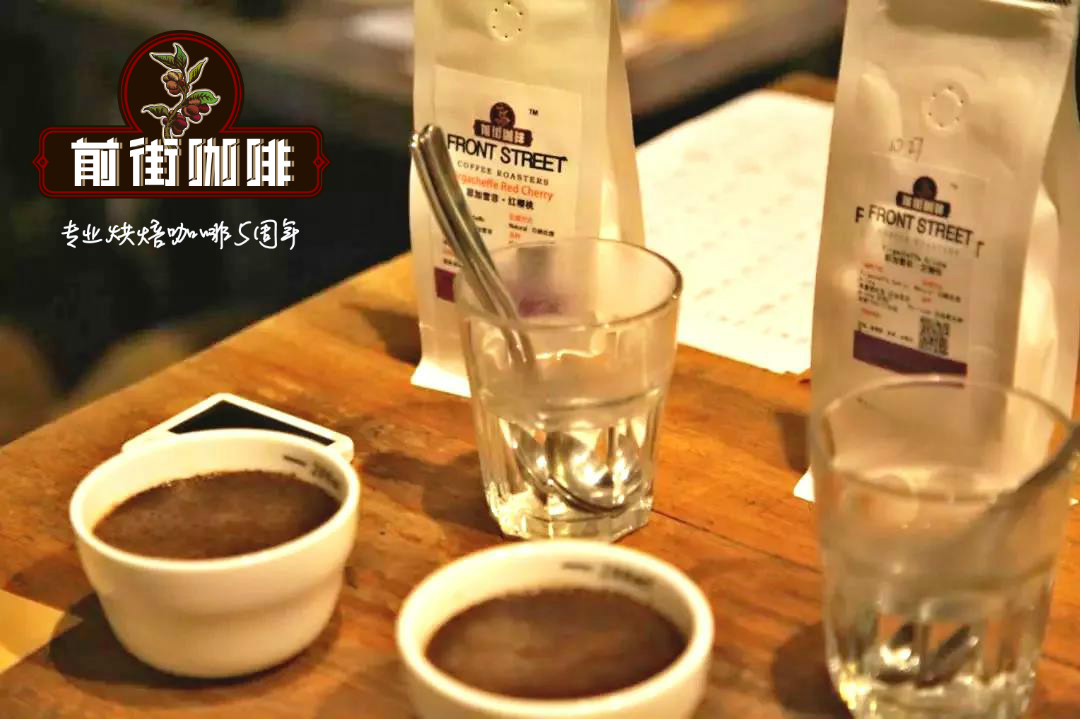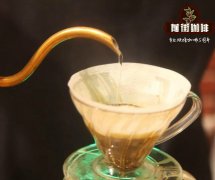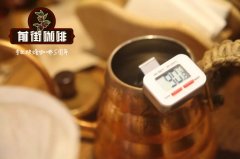The powder of hand-brewed coffee is better than that of hand-brewed coffee.

Professional coffee knowledge exchange more coffee bean information please follow the coffee workshop (Wechat official account cafe_style)
When the temperature and grinding degree are the same, but do you still think that the coffee brewed is not ideal? It may have something to do with the proportion of powder you choose.
| how important is the powder-to-water ratio to a cup of hand-made coffee?
In the production of hand-brewed coffee, the amount of water has a great impact on the flavor of coffee, different powder-to-water ratio will affect the flavor, taste and so on. The water supply is less, too rich, and the flavor is not clear enough; the water supply is too light and even tastes like a cup of coffee-flavored water.
As we all know, the ideal extraction rate of gold cup extraction is in the range of 18%, 22%, and the concentration range is in the range of 1.15%, 1.45%. But we usually do not have those things at home that can test the concentration, so how do we know what powder ratio of hand-brewed coffee is suitable for a bean?
The shallow, medium and deep baking degree editor chose [Panamanian Flower Butterfly], [Yemeni Moka] and [Jamaica Blue Mountain] to do the experiment, while the powder-water ratio tried the powder-water ratio of 1:13, 1:15 and 1:17 respectively.
[Panamanian Flower Butterfly]: BG grind 5m (Chinese standard No. 20 sieve pass rate 60%), water temperature 90 ℃, powder / water ratio: 1:13, 1:15, 1:17, cooking time (time for steaming starts): 39,55 ", 2: 10", 2: 27 ".
[Yemeni mocha]: BG grind degree 5R (Chinese standard No. 20 sieve pass rate 56%), water temperature 89 ℃, powder / water ratio: 1:13, 1:15, 1:17, cooking time (time for steaming starts): 1mm 39 min 50 ", 2x 05", 2x 14 ".
[Jamaica Blue Mountain]: BG grind degree 6m (Chinese standard No. 20 sieve pass rate 50%), water temperature 85 ℃, powder-to-water ratio: 1:13, 1:15, 1:17, cooking time (starting time for steaming): 39,35 ", 1mm 46", 1x 57 ".
Xiaobian tried these three kinds of powder-to-water ratio in hand-brewed coffee. I think the powder-to-water ratio of light-roasted beans can be elongated appropriately, while medium-roasted and deep-roasted beans are more suitable for a smaller powder-to-water ratio.
After roasting, the structure of coffee beans will become loose and brittle, and the flavor substances inside will be extracted more easily, so some bad flavors will appear after lengthening the powder-to-water ratio. and most of the deep-baked beans focus on dark chocolate, caramel flavor and mellow taste, if lengthened the powder-to-water ratio, the whole will lose the characteristics of deep-baked beans.
In shallow baking, the baking time is shorter than that of moderate and deep baking, so the damage to the structure of coffee beans is not as severe as moderate and deep baked beans, and the flavor molecules are locked more tightly. In particular, beans at high altitude are hard and will be more resistant to extraction, so even if the powder is longer than later, it is not easy to produce some bad taste.
However, the powder-to-water ratio is not fixed, but varies according to the utensils used to brew coffee by hand. For example, when we do concentrated coffee, the powder-to-water ratio is mostly 1 / 15 or 1 / 2; ice drop coffee is at 1:10, and so on. If you want to get a good cup of coffee, choose the parameters you want based on your understanding of the bean, and then extract a cup of coffee that you are satisfied with.
Important Notice :
前街咖啡 FrontStreet Coffee has moved to new addredd:
FrontStreet Coffee Address: 315,Donghua East Road,GuangZhou
Tel:020 38364473
- Prev

Handmade coffee tastes better than American coffee? What is the difference between hand-brewed coffee and American style?
Professional coffee knowledge exchange more coffee bean information Please follow the coffee workshop (Wechat official account cafe_style) I do not know if my partner has ever encountered such an experience, when you enter a boutique cafe and want to order a cup of black coffee, the barista asks you, would you like American coffee or handmade coffee? Black question mark face? I just want a drink.
- Next

What is the problem of delamination of Coffee Blossom Niu? how can Coffee Blossom not be a lump?
Professional coffee knowledge exchange more coffee bean information please follow the coffee workshop (Wechat official account cafe_style) Q: coffee flower lines will be layered, into a lump? A: the milk foam will be layered when the coffee is pulled, which may be because the milk and the milk foam are not mixed well! Pulling flowers is not just about mixing milk and espresso. Before that, when milking
Related
- Beginners will see the "Coffee pull flower" guide!
- What is the difference between ice blog purified milk and ordinary milk coffee?
- Why is the Philippines the largest producer of crops in Liberia?
- For coffee extraction, should the fine powder be retained?
- How does extracted espresso fill pressed powder? How much strength does it take to press the powder?
- How to make jasmine cold extract coffee? Is the jasmine + latte good?
- Will this little toy really make the coffee taste better? How does Lily Drip affect coffee extraction?
- Will the action of slapping the filter cup also affect coffee extraction?
- What's the difference between powder-to-water ratio and powder-to-liquid ratio?
- What is the Ethiopian local species? What does it have to do with Heirloom native species?

